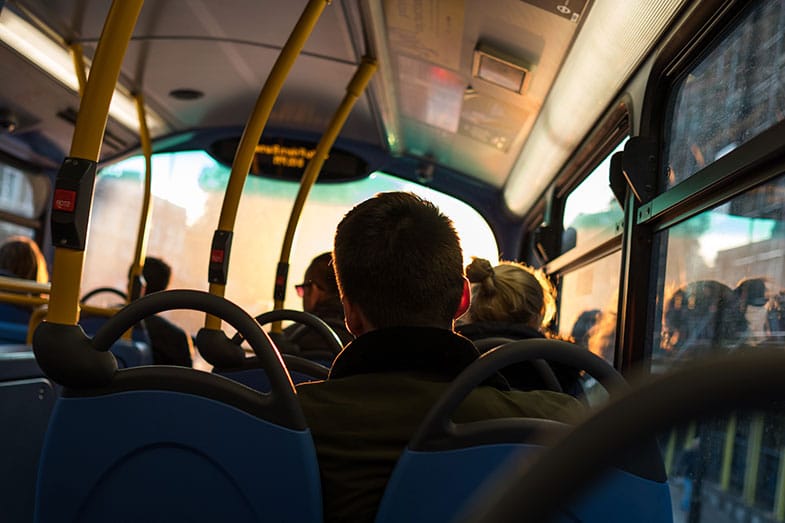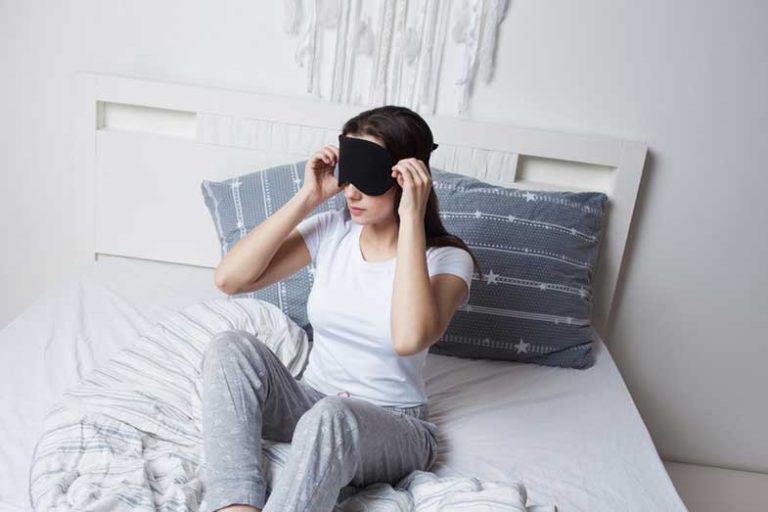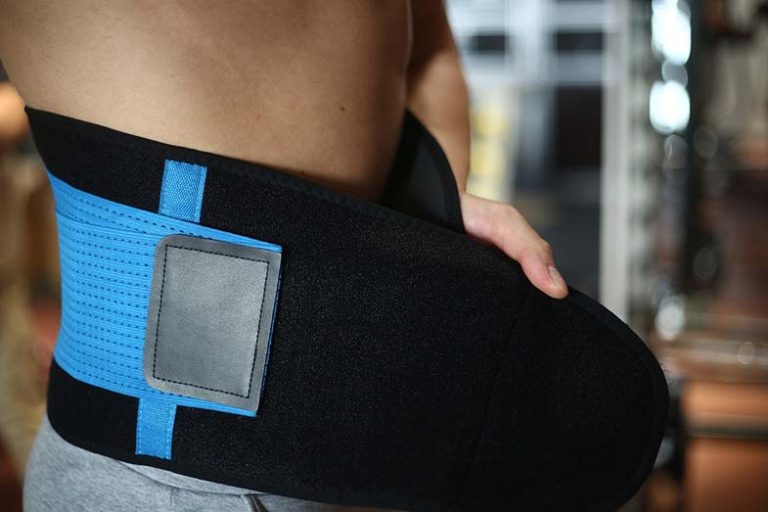Why Is It so Easy to Fall Asleep on the Bus or Train?
Disclosure: We may get commissions for purchases made through links in this post.
Dozing off during the commute is a common occurrence for many travelers. A quick nap before arriving at your destination is normal, especially when you lack that much-needed sleep. But even if you feel energized, sleeping on buses and trains just seem to be a natural thing.
Why Is It so Easy to Fall Asleep on the Bus or Train?

So why do people fall asleep so easily on public transportation? What do buses, trains, and other vehicles have that makes them conducive for sleeping? Here are some of the reasons:
1. Comfortable Seats
Although buses and trains are not close to the comfort level of your couch or your bed, just being in a cozy enough position is sufficient to make you nod off. Sitting down, closing your eyes, and leaning your head a bit is enough to get you in a relaxed state. Furthermore, public transport is also typically equipped with ventilation systems that set the right temperature that’s comfortable for commuters, so that adds to the comfy factor.
In addition, you generally feel safe when riding buses and trains. Public transport usually has skilled drivers who have years of experience in their occupation, having undergone the necessary training enabling them to handle emergency situations. Commuters essentially trust the drivers to take them safely to their respective destinations. People feel they can catch some Z’s for a few minutes because they don’t need to watch the road.
Similarly, you may feel anxious in a car with a driver you don’t trust. When the driver is family or a friend, sleeping soundly is easy, even if the journey is a few hours.
2. Long Periods of Inactivity
On buses and trains, you don’t move around very much. You just sit down and enjoy the scenery as the vehicle moves along the road. Basically, you’re away from the things that keep your mind and your physical body busy. Of course, you can feel sleepy when working or doing errands, but the effect is not the same when you’re not moving. With that in mind, staying relatively motionless during a ride makes it easier to fall asleep. This inactivity also slows your brain activity down because there’s no stimulus to keep it awake.
3. Highway Hypnosis

Rides are relatively monotonous. For minutes or hours, you stay in the same position looking at the repetitive things around you: trees, houses, streetlights, yellow and white road lines, and mostly pavement. Naturally, your mind gets tired of the pattern, leading to what is known as, “highway hypnosis.”
Geoffrey Underwood, psychology professor at University of Nottingham, discusses this phenomenon at length in his book “Traffic and Transport Psychology: Theory and Application.”
Underwood describes highway hypnosis as a trance-like state that people can experience when driving or riding a car for a long stretches of time. Repetition and high predictability are the big factors for highway hypnosis, causing our attentiveness to plunge. Our brain just gets used to the things we see on the road that it feels automatic in a sense. This leads to sleepiness, and you’re snoozing before you know it.
Because our brains sort of come to an ‘autopilot mode’ during long rides, it makes sense that our brains are active when continuously roused with different stimuli. That’s why we don’t fall asleep while using our phones in bed, even when we’re lying there for a long period of time. So if you’ve been trying to get some sleep, doctors recommend steering clear of screens at least half an hour before going to bed.
4. White noise
Cars and other vehicles are a perfect environment that produces white noise. According to Ethan Green of No Sleepless Nights, white noise is the “signal or frequency created when all the different frequencies of audible sound that the human ear and brain can perceive are put together at a similar level.” It’s a consistent noise, like the hum of tires or the purring of the car. White noise masks distracting sounds, and is helpful for people who have trouble getting sleep.
When you’re riding a vehicle, white noise is continuously emitted, making it easier for passengers to drift off to dreamland.
5. Rocking motion
Another popular view as to why it’s easy to fall asleep in buses or trains is because of the rocking motion that’s similar to what lulled us to sleep when we were babies. There exists a “womb-like effect”, says Joanne Getsy, Drexel University Sleep Center Director. Thereby it’s easy to feel safe and comfortable.
Getsy warns, though, that it’s not a good idea to rock babies to sleep. However, it’s not the rocking movement, per se, that induces sleep. Rather, it’s the association between rocking and sleeping. If you were rocked to sleep as a baby, you’d have that association that when you experience a rocking motion, you go to sleep.
6. Increase in carbon dioxide in public transportation
Buses and trains get crowded everyday with people going to and from work. Dr. Michael Breus, a clinical psychologist and diplomate of the American Board of Sleep Medicine, explains why this contributes to the phenomenon of sleeping during commute.
Carbon dioxide increases when there are lots of people in a small space. This reduces oxygen to the brain and slows it down.
Sopite Syndrome, Carcolepsy, and Sleep Deprivation
If you think that you fall asleep a little too easily during rides, you may be experiencing a more deep-seated issue.
Sopite Syndrome is one of them. It’s a neurological disorder that relates symptoms of fatigue, drowsiness, and mood changes to lengthy periods of motion. Sopite Syndrome is actually attributed to motion-induced drowsiness, like the one experienced by babies when being rocked to sleep. Symptoms include yawning, drowsiness, mood changes, and sleep disturbances, among others.
Carcolepsy, on the other hand, is a condition in which a passenger falls asleep as soon as the car starts moving. There are many people who find it hard to stay awake once they hop on a moving vehicle. The cause of this is still unknown, and carcolepsy is still not officially a word.
In contrast, a more common cause of sleeping easily on moving vehicles is sleep deprivation. If you’ve been doing too much work lately and haven’t been able to sleep at least 6 hours a day, you might be sleep deprived. Thus, when you get into a bus or a train where you’re relaxed enough and not required to pay attention, the motion and sounds in a moving vehicle induces sleepiness.
How to Stop Sleeping on Trains and Buses
Taking a quick nap on bus rides can be pretty harmless. But if you’re ever in a situation where you can’t risk dozing off, try these few short tips.
- Stand up in commute. Your chances of getting sleepy are minimized when standing rather than sitting down.
- Engage in conversation. If you’re traveling with a friend, talk to them during the ride. If not, you can try to be friendly and meet someone new. Engaging in conversation helps you remain alert during the trip.
- Find anything that will stimulate your attention. Surf the internet, play a mobile game, read a book, or bring a Rubik’s cube to keep you occupied.






